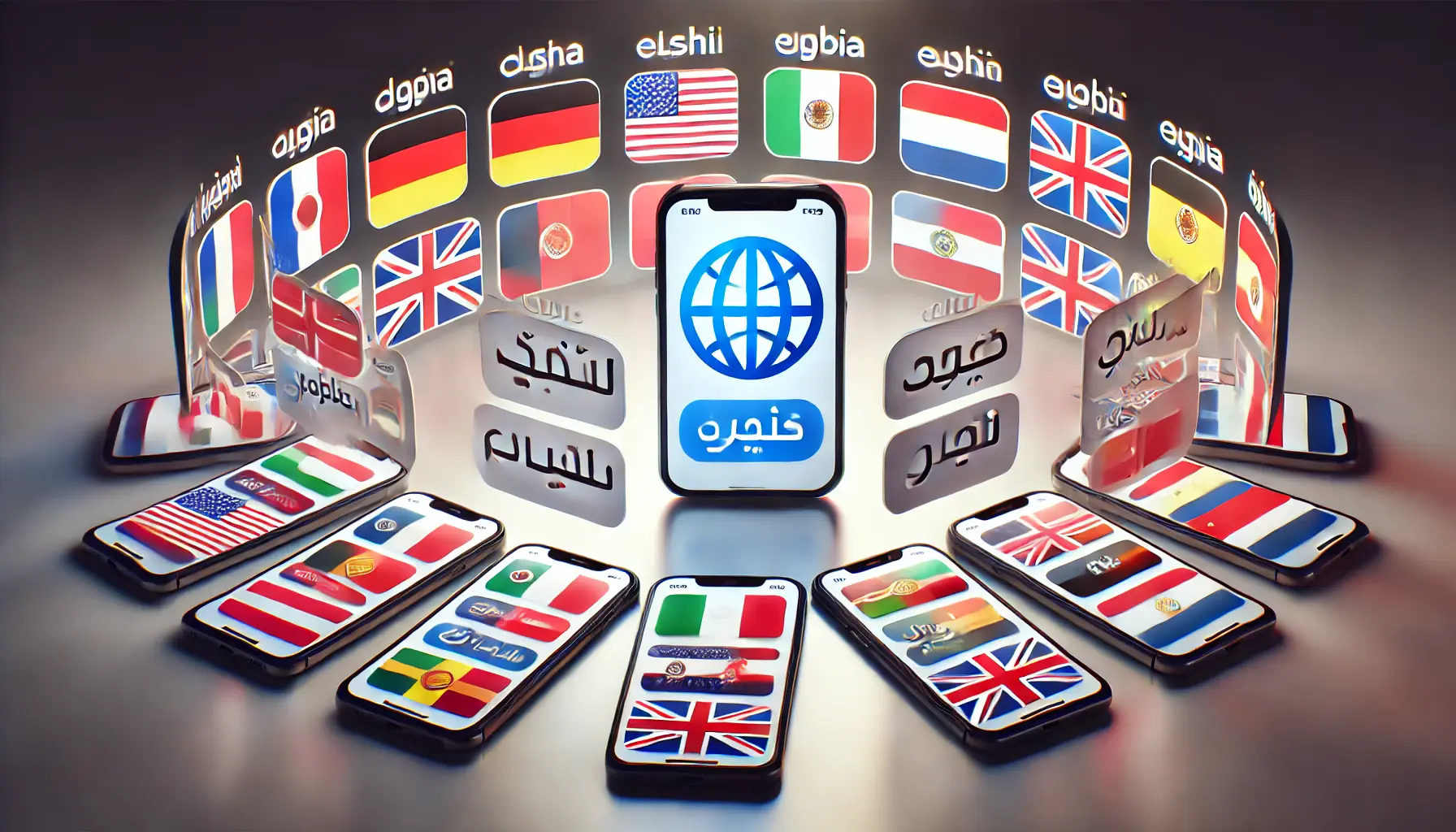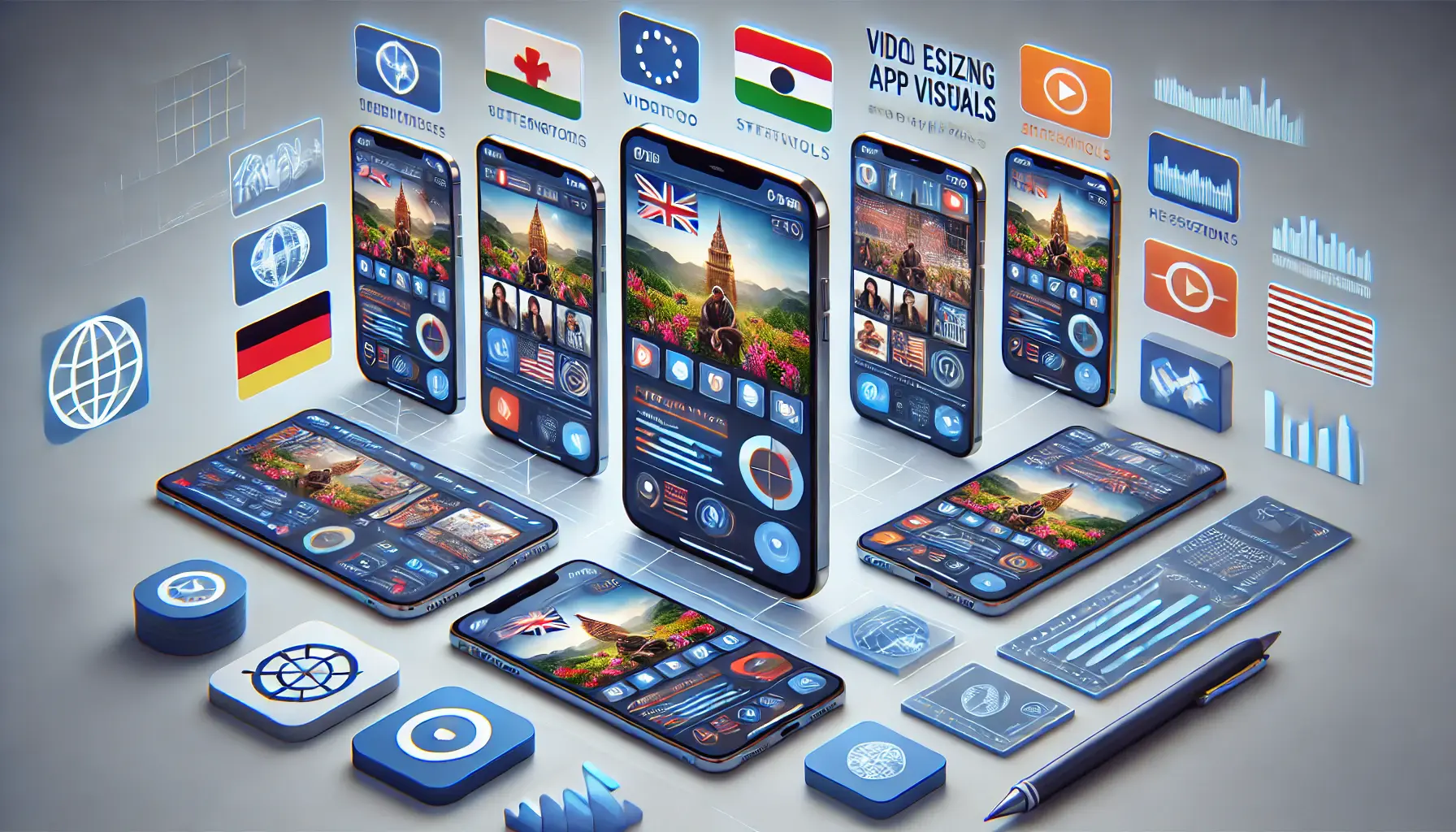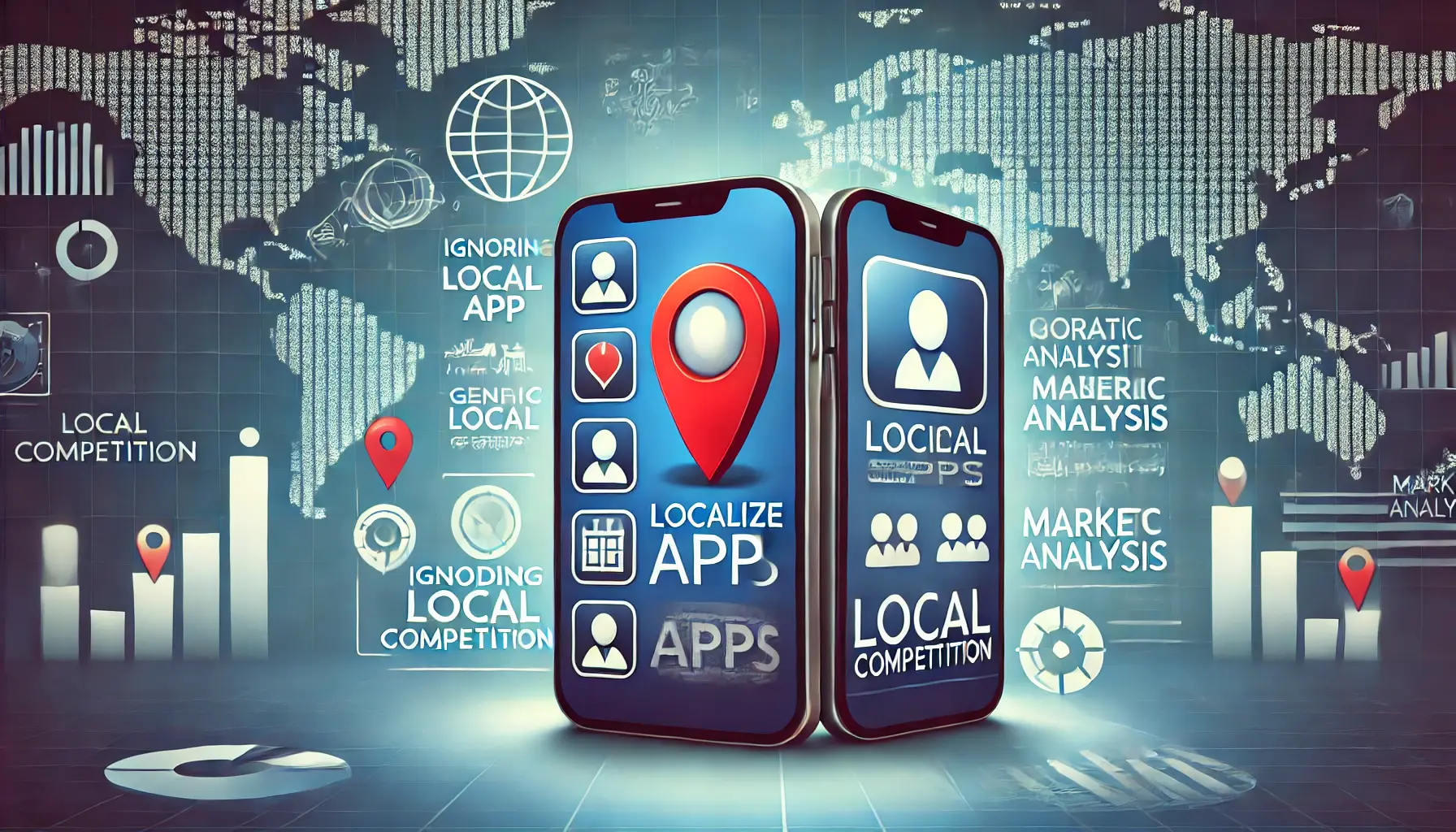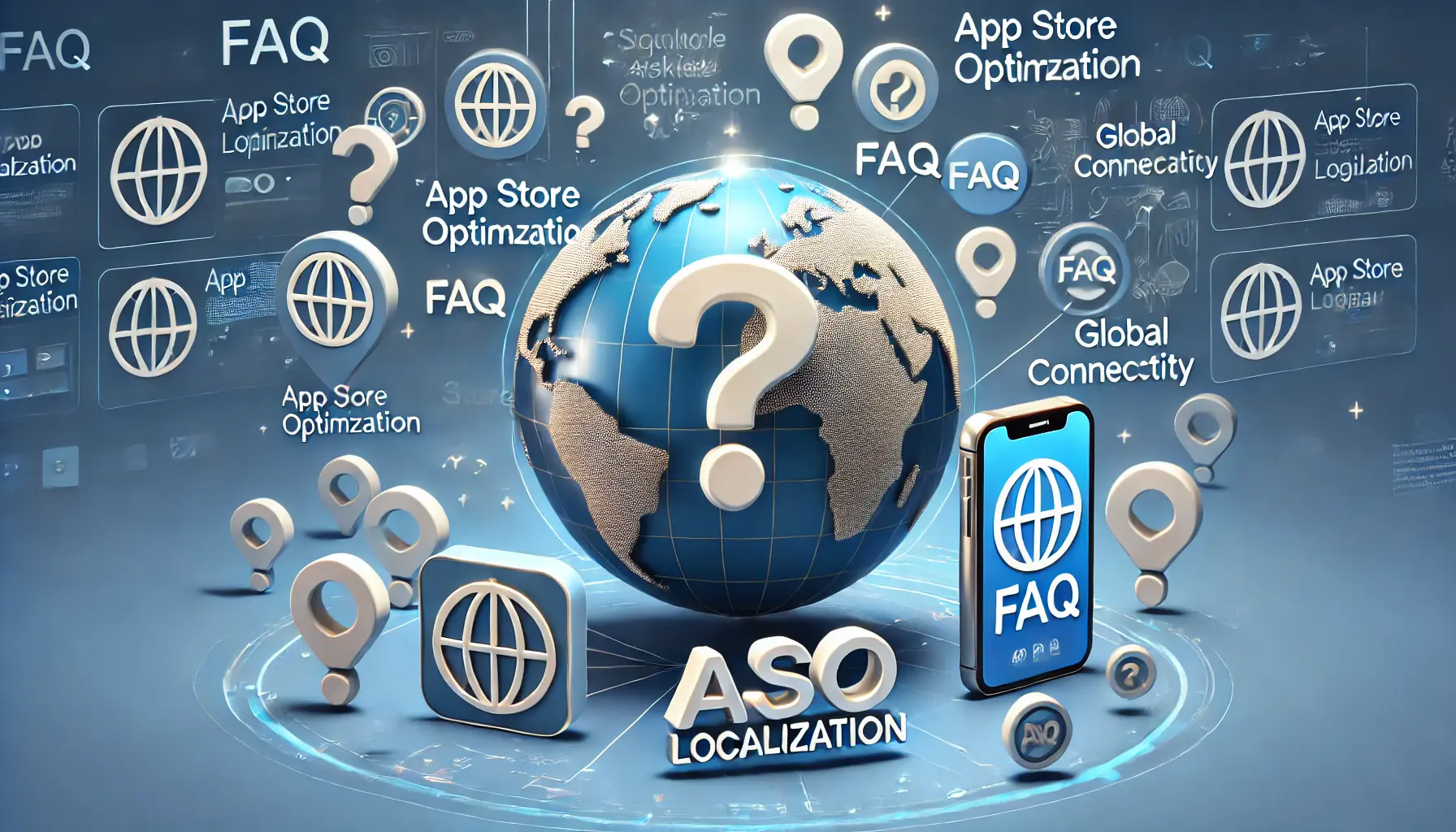Creating an app, in itself has become a completely separate industry now due to the unparalleled competition on the mobile market today.
When you aim to give your app maximum reach and downloads, getting the same in a global market is where localization plays its part for us in ASO (App Store Optimization).
In this case, we are talking about localization, which is not simply doing a translation but also meant to adapt the experience of your app so it makes sense in linguistic and cultural terms for each region.
Localizing your app the right way allows you to reach out to users from different parts of the world, which also increases visibility and download for your apps.
But how do you properly localize an App Store Optimization strategy?
How do you localize your app the right way so it will appeal to users in different markets?
This post will take an in-depth look into localization for ASO, why it’s important, and how to localize the correct way so that you can achieve the most app downloads possible worldwide.
- Knowing about Localization in ASO: Importance for a Wider Global Reach
- Importance of Localization in ASO
- The Right Language Choices for ASO Localization
- How to Improve Localization Results by Optimizing App Metadata
- The Most Common ASO Localization Mistakes
- How to Measure Success — Measuring Impact of Localization in ASO
- Conclusion: How to Manage ASO Localization Well for Global Reach
- ASO Localization FAQ
Knowing about Localization in ASO: Importance for a Wider Global Reach
Localization is more than just translating content to the target languages.
This includes customizing the metadataData that describes and gives information about other data, such as app titles or descriptions. and user interface of your app to cultural and regional requirements, as well as marketing strategies according to preferences in various countries.
We want to create an experience that appears natural and familiar to the users, allowing them a better chance of downloading and actually using your app.

Connecting Global Users through ASO Localization
What Makes Localization So Important in ASO?
Let’s break it down:
- Greater Visibility: Local apps are more likely to appear in app stores for relevant search terms within the region. This increases the app visibility and allows users to discover your app.
- A Better User Experience: When an application is designed for the language and culture of a group, it results in better retention rates because users are more likely to interact with something that they can relate to.
- Accessibility to a New Audience: Localization opens up not just untapped markets but also a completely new user base for your app.
- Competitive Advantage: Not all apps practice localization. That way, you have a better chance at outperforming competitors who might not be present in your language or region.
As the app market grows globally, localization gives you an advantage.
Without localization, your app can only be used in one market or by a few users, but with it, you can reach millions more.
Localization is crucial for making apps relatable to users in various markets, ensuring relevance and cultural fit.

Adapting Apps for Global Markets through Localization in ASO
Importance of Localization in ASO
Localization makes sense not just because it makes your app more visible but also because it makes your app more relevant to the target audience.
By localizing right, you show your users that they matter to you.
User acquisition and engagement increase dramatically with this personal touch.

Driving Global App Downloads through Effective Localization
The Role of Localization in Driving App Downloads Globally
When implemented properly, localization can greatly impact app downloads.
People are more likely to trust and therefore download an app that feels familiar, where the language spoken is also a comfortable voice they know.
It bridges cultural divides and makes your app closer to global users.
Localization increases visibility and user engagement, proving it to be a key factor in ASO success.

Choosing the Right Languages for Effective ASO Localization
The Right Language Choices for ASO Localization
Ultimately, one of the most important decisions you should make in regard to ASO localization is what languages your app will use.
While it might be enticing to localize in every language you can think of, this is really not a necessary step.
Instead, you should think about key markets that will provide great value for your app’s growth in terms of localization.
However, how do you decide on the languages to invest in for ASO localization?
You should check and decide on targeting where your application is most likely to succeed.

Analyzing Top Markets for App Localization Success
Top Markets for Localization Trend Analysis
It’s always important to research the regions where your app would get more downloads before choosing a particular language for localization.
Ask yourself:
- In what countries is there a good demand for such apps?
- Which are the primary languages used in these areas?
- What is the app market competition like in these countries?
- What are the localization costs for these languages, and what is the potential return on investment (ROI)?
Answering these questions will help you figure out which languages to prioritize in your localization efforts.
Note: Studying a high-potential market strategy not only increases your exposure but also improves how you manage resources.

Using Languages to Expand Your App’s Global Reach
Languages to Broaden Your Global Reach
Some language choices will naturally depend on your target audience and app type, but for maximum global reach, consider the following languages:
- English: For accessing many markets, English is considered the default language for top app store rankings.
- Spanish: Given the large number of Spanish speakers everywhere from Europe to Latin America, localizing in Spanish is essential for a potential user base.
- Chinese: As China is one of the largest mobile app markets, localizing into Chinese is essential for a successful global go-to-market strategy.
- German: Germany is a major economic powerhouse, and localizing in German allows access to a large, affluent user base.
- Japanese: Japan has a strong mobile app user base, making Japanese an important language when localizing for ASO.
By doing so, you can appeal to some of the most widespread languages, which could increase your app downloads globally.
As a consequence, you want to think about which languages will provide your app with the most visibility and user traction in return for the time invested in localization.
Choosing the right languages for localization is critical to gaining traction in global markets.

Optimizing App Metadata for Better Localization Results
How to Improve Localization Results by Optimizing App Metadata
App Metadata — One key step in ASO localization is the optimization of your app metadata.
App metadata includes your app title, description, keywords, and even visuals like screenshots or videos.
Unless these elements are localized for all regions in which your app is available, you may find less success with downloads outside of the regions supported.
The answer is localizing your app metadata—every piece of content you provide needs to be recognizable and relatable for the users, matching their language and cultural expectations.

Localizing App Title and Description for Global Markets
App Title and Description Localization
The title of your app and the description are what potential users see first.
Failure to localize these elements may not attract users in foreign markets.
When localizing the app title and description:
- Make sure the translated title retains its sense and significance, fitting into the local language smoothly.
- Include local keywords that users may be searching for based on that region.
- Use clear, culture-specific language without any idioms or phrases that may not translate well.
Subtitle and description in the local language that appeals to local preferences is one of the first impressions your app gives (and yes, Apple encourages it), leading to a higher download rate than with a generic English text.

Using Translated Keywords for Global Search Optimization
Translation of Keywords for Global Search Optimization
Correct keywords are critical to getting the targeted ranking in local app stores.
You cannot simply translate your primary keywords and consider the job done.
Every region is different, and everyone searches for things differently.
To succeed in localization, you should:
- Understand the local search trends and keywords used in your app’s category for each region.
- Use long-tail keywords that local users might search to find your app.
- Don’t just translate keywords—use location-focused terms that resonate with local audiences!
This approach to landing page keywords, which are specific to each location, can increase your app’s visibility in local search engines and help you capture more leads from different markets.

Adapting App Visuals for Local Markets through Resizing Screenshots and Videos
Resizing Screenshots/Videos for Local Markets
Screenshots and videos are also important elements if you want to localize an app in different territories.
These visuals need to align with the local cultural context and cater to regional tastes.
To do this effectively:
- Upload images that relate to the local lifestyle, culture, and native elements of that region.
- Localize the text in the screenshots and also in any video content.
- Focus on app features that are likely to interest users in the specific location.
This makes the overall experience more enticing for users while improving your chances of downloads and success in local markets.
Optimizing app metadata for each region improves visibility and download rates.

Avoiding Common Localization Mistakes in ASO
The Most Common ASO Localization Mistakes
Although proper localization is something that can help you significantly in extending your app’s audience and reaching more people, there are some common mistakes many developers make while trying to localize their app.
By paying attention to these mistakes, you can avoid your app being rejected in global markets and losing attraction with local users.

The Impact of Ignoring Cultural Differences in App Localization
Ignoring Cultural Differences
The most widespread mistake in performing ASO localization is paying no attention to the cultural differences of each target market.
What works in one country does not necessarily work in another.
For instance, different cultural interpretations may place conflicting connotations on specific images, colors, or symbols.
Your app might alienate potential users if you don’t localize for these cultural preferences.
- Study the unique culture of a region before attempting to change your app’s aesthetics and content.
- Avoid using inappropriate imagery or text that could be misinterpreted or considered offensive.
- Focus on culturally familiar themes that appeal to your target audience.
Localization is key to building trust and increasing user engagement, as culture-specific concepts need careful attention in the localization process.

The Risks of Ignoring Local Competitors in ASO Localization
Ignoring Local Competitors
Neglecting competition in target markets is another common ASO localization mistake.
Every market is unique, and understanding what local competitors are doing makes all the difference in successfully positioning your app.
- Conduct competitor research in the app category you are targeting.
- Analyze how local competitors are leveraging localization efforts.
- Identify a niche where your app can stand out.
Staying ahead of local competitors gives you an advantage, allowing you to tailor your localization strategy more effectively for market penetration.

The Difference Between Translation and Localization in App Development
Translation vs. Localization: What Is the Difference?
A classic ASO localization pitfall is translating instead of truly localizing.
While translation involves converting text from one language to another, localization takes it a step further by adapting the app to cultural and linguistic differences.
Simply translating can cause you to miss important details that could make your app more attractive to local users.
- Translation is language-based, while localization involves cultural adaptation.
- Ensure your app’s interface, keywords, and messaging are tailored to each local market.
- Avoid direct translations that may not make sense in some cultures.
This focus on true localization will keep users interested in your app and increase your chances of success when expanding into different markets.
Avoid common localization errors like ignoring cultural differences or neglecting competitor research.

Measuring the Success of Localization in ASO with Key Metrics
How to Measure Success — Measuring Impact of Localization in ASO
After implementing your ASO localization strategy, it’s crucial to measure its effectiveness, but do you know how?
Measuring the performance of your localized app in different regions is mandatory to ensure you’re on track.
It will give you insights to fine-tune your marketing approach, improve your localization, and generate higher downloads worldwide.

Tracking KPIs to Measure Localization Success in ASO
Using KPIs to Measure Localization Progress
Key Takeaways: KPIsKey Performance Indicators, measurable values used to evaluate the success of a project or activity. for ASO localization success.
The results and impact of app store optimization will vary depending on the targeted region.
Some important KPIs include:
- Downloads: Track how many downloads your app gets in each country after localization. If downloads increase significantly, it indicates that your app has been successfully localized.
- Conversion Rate: Track how many users convert from browsing to downloading the app in different regions. A high conversion rate shows that your localized metadata, visuals, and keywords are resonating with users.
- Retention Rate: Monitor how many users continue to use your app after the first download. If you see good retention rates among localized users, it’s a clear indicator that your localization efforts are creating a positive user experience.
- App Store Ranking: Check how your app ranks in local app store listings for relevant keywords and categories. Higher rankings mean your localized keywords and metadata are working effectively.
By tracking these KPIs, you can determine how your localization strategy is performing and adjust it as necessary.

Measuring Localization Efficacy Through Analytics Tools
Localization Efficacy Metrics
Several tools can help you track your ASO localization strategy’s success, providing analytics and performance reports:
- App Store Analytics: Apple and Google Play offer built-in analytics for tracking downloads, conversion rates, and other metrics across different regions.
- Specialized ASO Tools: Tools like Sensor Tower, App Annie, or Mobile Action are designed to monitor keyword rankings, app performance, and the impact of localization across markets.
- A/B Testing: Experiment with different localized titles, descriptions, or screenshots to determine the most effective approach for each region.
- Reviews and Ratings: Monitor user reviews and ratings in different languages to understand how your localized app is performing and where improvements can be made.
These tools allow you to monitor and improve your localization strategy, ensuring that it remains effective in all markets.
To conclude: localization is one of the key tools in ASO for making your app competitive in global markets.
Optimize your app metadata, select the appropriate languages, and avoid common mistakes to ensure your app attracts users globally.
If you want to improve your strategy and achieve the highest number of global downloads, it’s essential to measure everything using KPIs and specific tools.
Track KPIs such as downloads, conversion, and retention rates to measure localization success.

Managing ASO Localization for Maximum Global Reach
Conclusion: How to Manage ASO Localization Well for Global Reach
ASO Localization: More Than Just a Translation.
Localization means tweaking your app to make sense for a culture and language, or adjusting how it works on a localized OS.
This makes the app more attractive to a larger target group, boosting discoverability and leading to higher downloads on a global scale.

Optimizing ASO Localization: The Core Practices for Global Reach
ASO Localization: The Core Practices
If you have followed along with this article, you now understand the complexity of ASO localization.
In summary, here are the key takeaways:
- Start with the Biggest Markets: Don’t try to localize for every language. Focus on well-defined key markets. This approach will help you maximize your chances of succeeding by providing better returns on your localization efforts.
- Metadata Optimization: Transform your app title, description, keywords, and visuals to suit the local taste. This ensures that your app is not only seen but also used by people in different countries.
- Avoid Pitfalls: Steer clear of mistakes like assuming your audience is culturally uniform or thinking that translation alone will suffice. True localization involves adapting to each market’s cultural values and preferences.
- KPIs: Track downloads, conversion rates, and app store rankings to measure the success of your localization efforts. Modify your strategy as needed to make better use of your app in different regions.

Localizing ASO for Global Reach and Success
The Importance of Localizing ASO
In the highly competitive global mobile app market, it’s challenging to stand out without a localized approach.
Including localization in your ASO strategy can give you an edge over the competition by providing a more personalized experience for users.
This trust, combined with increased engagement and retention from strong localization work, ensures your app’s long-term success.

Optimizing Your Localization Strategy for Maximum Global Impact
Optimize Your Localization Strategy for Maximum Impact
Remember, localization is an ongoing process.
As you refine your strategy, consider the following:
- Keep your localized content fresh. Translations and localization need periodic updates to reflect changes in language trends or cultural shifts.
- Experiment with localized elements using A/B testing to deliver the best user experience for each region.
- Engage with user reviews and feedback to understand how your app is performing in various markets and where improvements can be made.

Maximizing Global Reach and Potential Through ASO Localization
Conclusion: Maximizing Global Potential with ASO Localization
At the end of the day, localization in ASO is about making your app relatable to global user masses.
While a marketing campaign may require a budget, proper localization is an investment that can unlock new territories and drive the downloads that lead to global success.
Choosing the right languages, optimizing metadata, and consistently analyzing performance will allow you to reach different demographics and help your app reach its full potential.
If you are targeting the widest audience possible, then ASO localization is a necessity.
Begin localizing right away and give your app a unique presence in the global market.
Localization helps you reach global markets, optimizing visibility and user engagement across multiple regions.

Frequently Asked Questions About ASO Localization
Boost your mobile app's success with our guaranteed App Store Optimization (ASO) service. Leave it to the experts!
ASO Localization FAQ
Here, we explain some of the most frequently asked questions about ASO localization and best practices to help your app succeed worldwide.
These questions highlight what you should know about localizing an app, including the process, challenges, and strategies to follow.
ASO localization is the practice of customizing an app’s metadata, content, and user experience to meet specific cultural, linguistic, or technical preferences in different regions.
It helps make the app more accessible to global users, leading to higher downloads.
Localization helps apps achieve higher rankings in regional app stores, improves user experience, and expands your reach by connecting with potential users globally.
This results in increased downloads, better engagement rates, and success in varied markets.
Common errors in ASO localization include using translation as a substitute for proper copywriting, ignoring cultural differences, and neglecting to research local competitors.
True localization involves tailoring your app to meet the cultural needs of target markets.
Start by identifying your target markets and focusing on growth regions.
Research the dominant languages and competitor apps in those regions.
This will help you determine which languages to prioritize for your ASO localization efforts.
Monitor KPIs such as downloads, conversion rates, and retention rates by region.
These metrics, along with app store rankings, will help you assess how well your localization efforts are working and guide future adjustments.
Tools like Sensor Tower, App Annie, and Mobile Action can help track the performance of your keywords and app rankings after being localized in different countries.
These insights will help you refine your global ASO localization strategy.











